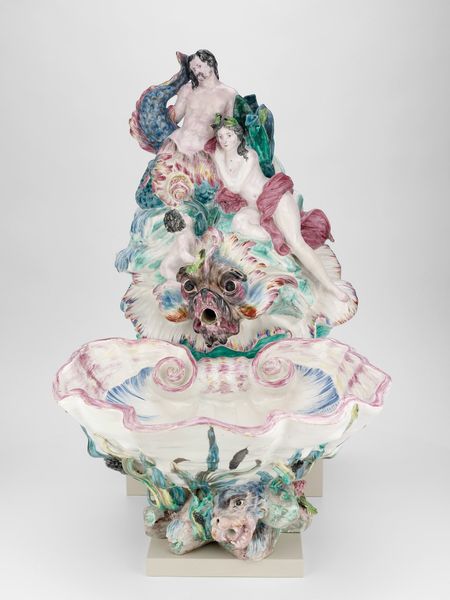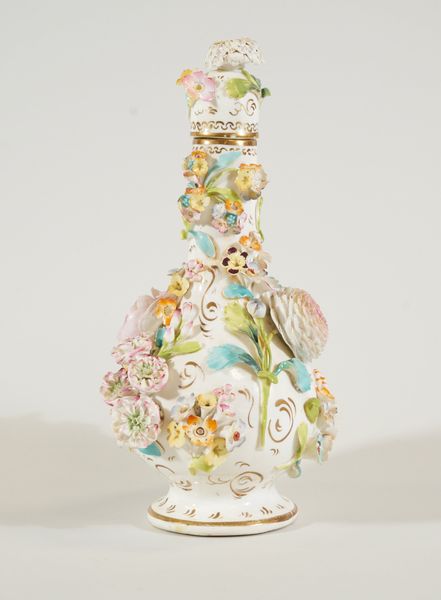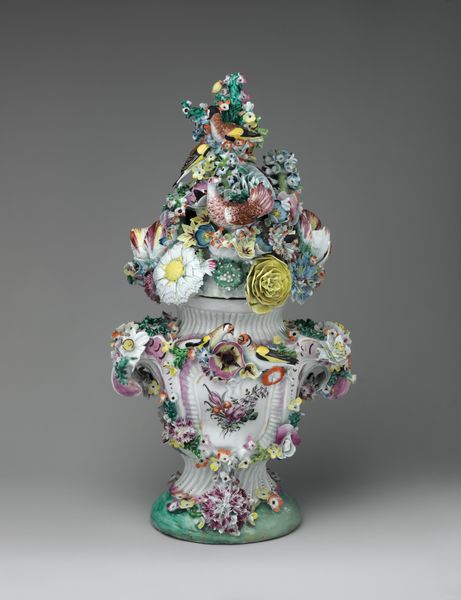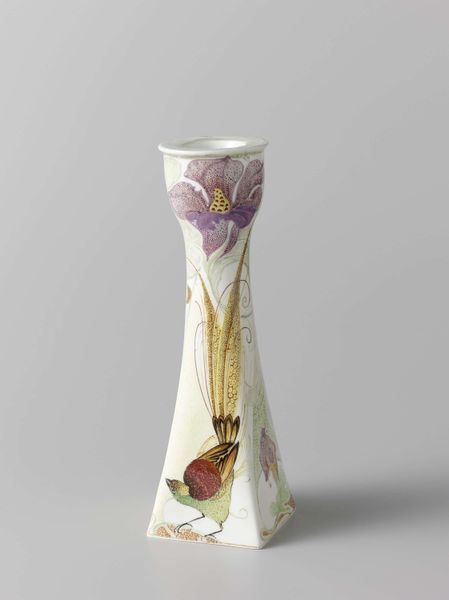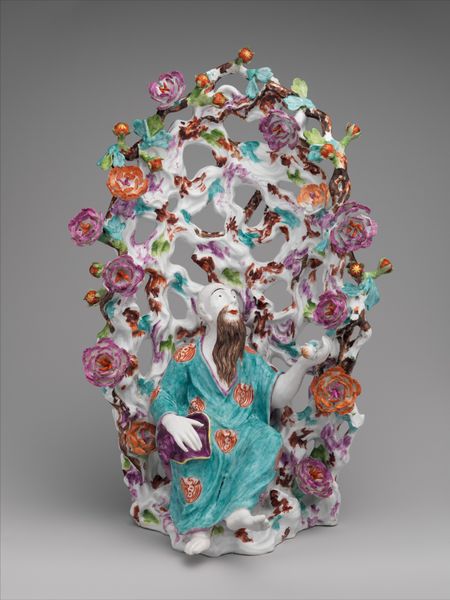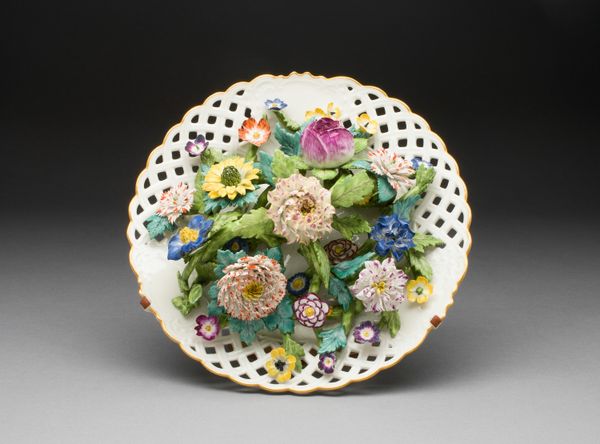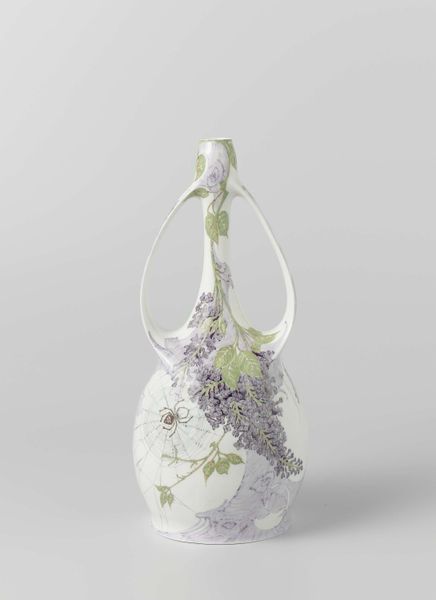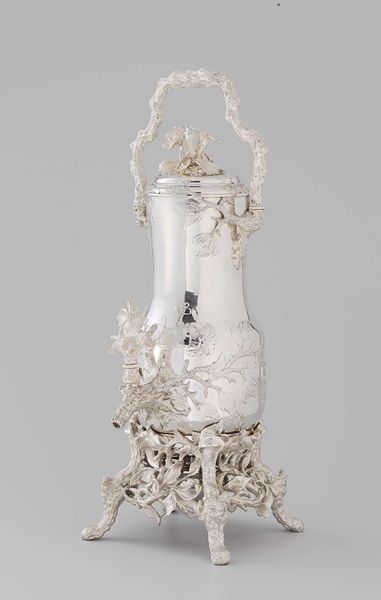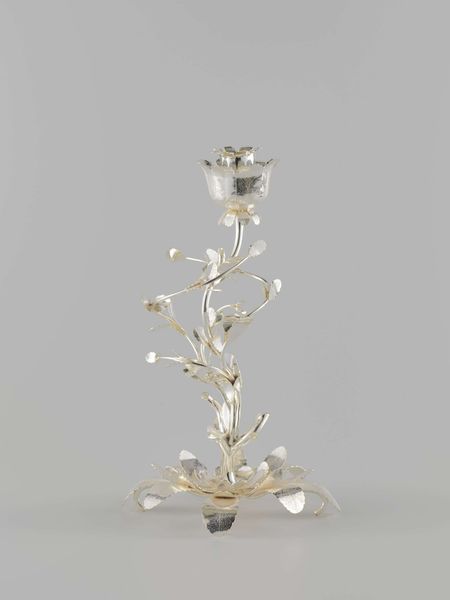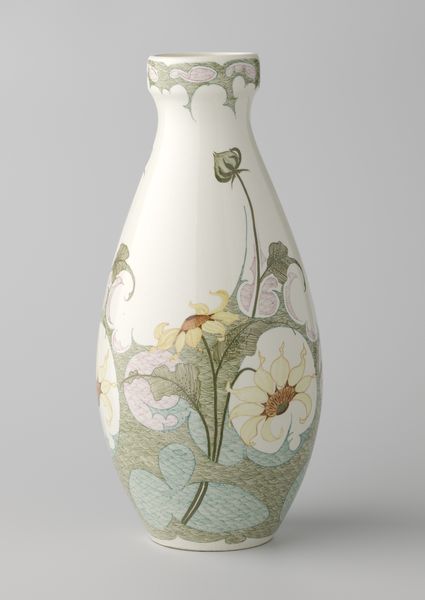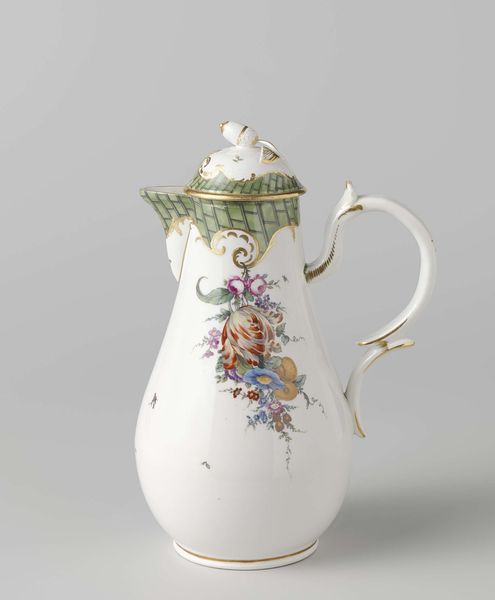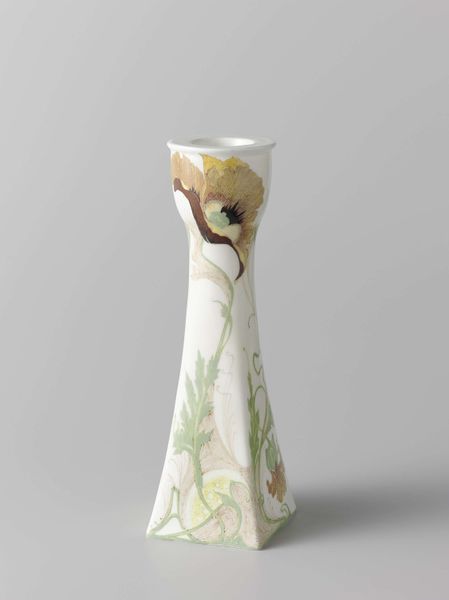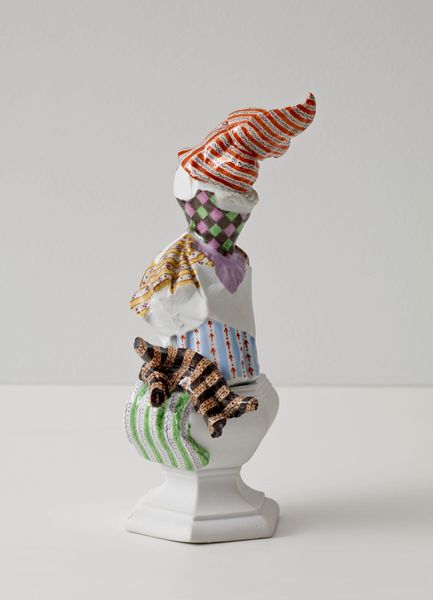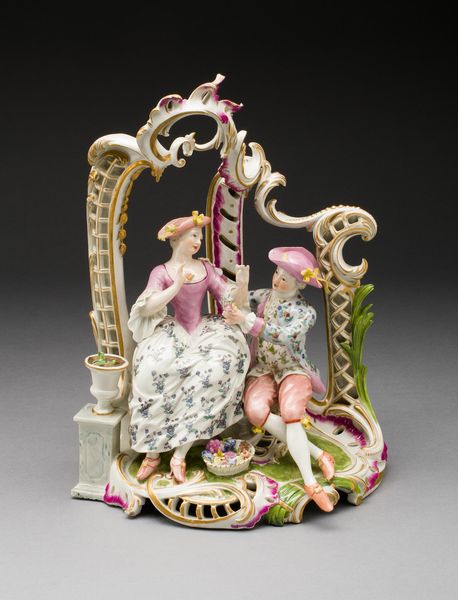
Copyright: Public Domain
This vase, adorned with delicate porcelain flowers, embodies the refined tastes of the elite during its time. Floral decoration became an integral part of European art, especially porcelain production, during the 18th century, a period marked by courtly culture, aristocratic patronage, and a fascination with the natural world. Aristocrats often owned large gardens and greenhouses, and floral motifs were a way for them to signify their cultivation, as much literal as cultural. Made for display in aristocratic salons, porcelain objects like these became important markers of status and taste. The creation of these objects relied upon the expertise of skilled artisans, but the system of production was still fundamentally shaped by the demands of the market. Investigating historical sales records and workshop practices, one can better understand the cultural and economic forces that shaped its creation.
Comments
No comments
Be the first to comment and join the conversation on the ultimate creative platform.
